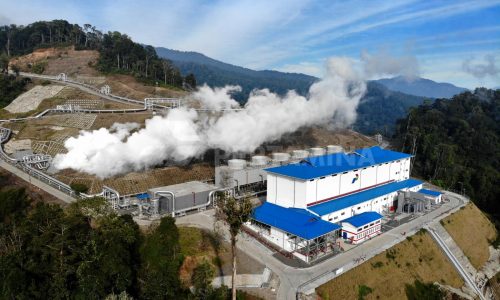Indonesia’s aim to achieve net-zero carbon emissions in the electricity sector by 2050 is under threat due to the government’s plan to develop new gas fields, potentially hindering the energy transition efforts, a researcher says.
Since 2023, Indonesia has resumed oil and gas exploration, discovering significant reserves at Geng North-1 gas field in East Kalimantan and Layaran-1 gas field off the coast of North Sumatra, each estimated to hold around 5 and 6 trillion cubic feet (tcf) of gas respectively.
This renewed focus on gas exploration contrasts sharply with the Just Energy Transition Partnership (JETP) scenario, which projects a gradual decrease in gas usage to 38.3 TWh (2.58 percent) by 2050, following a peak of 90.6 TWh (6.11 percent) in 2030.
“The new gas fields will increase domestic gas use, potentially derailing the JETP scenario aimed at accelerating the energy transition and minimizing fossil fuel dependency,” Sartika Nur Shalati, a researcher at Indonesia Cerah Foundation, said on Friday, June 21, 2024.
The discrepancy is further emphasized in a report by the think tank Zero Carbon Analytics titled “Bullish Asian gas demand forecasts eroded by renewable surge,” which assesses Indonesia’s decarbonization plans through gas as a transitional fuel.
According to the Electricity Provision Working Plan (RUPTL) 2021-2030 scenario, gas usage is projected to reach 15.4 percent by 2030, and the National Energy General Plan (RUEN) anticipates it to be at least 24 percent by 2050.
Moreover, Indonesia’s plan to add 80 GW of new power generation capacity in the latest RUPTL revision, with 20 GW relying on gas-fired plants, could divert resources from renewable energy development, posing a risk to the decarbonization agenda, Sartika warns.
The Ministry of Energy and Mineral Resources (ESDM) outlines three main scenarios for Indonesia’s gas supply in the coming decades. One scenario projects a surplus in gas supply for the period of 2018-2027 if long-term gas pipeline/LNG export contracts are terminated and redirected for domestic use.
The other two scenarios predict a gas surplus until 2024, followed by a deficit from 2025 to 2027.
These conflicting projections highlight the challenge of balancing domestic gas supply with the energy transition goals. The RUEN document anticipates Indonesia’s gas demand to reach 44.8 million tons of oil equivalent (mtoe) by 2025, increasing to 113.9 mtoe by 2050.
This surge in demand necessitates a substantial increase in gas supply, estimated at 89.5 mtoe (9,787 mmscfd) by 2025 and 242.9 mtoe (27,013 mmscfd) by 2050. Despite this, domestic gas fields are expected to meet only 35 percent of the projected demand in the next 20 years.
Amy Kong, a researcher at Zero Carbon Analytics, notes that Asian gas demand may not be as robust as the industry forecasts, citing the declining cost of renewable energy and volatile LNG prices as factors that could accelerate the adoption of renewables. This shift towards cheaper renewable energy could support Indonesia’s transition to a just energy system.
“To mitigate the risks of domestic gas shortages and to ensure long-term energy security, Indonesia must prioritize renewable energy development over continued gas exploration and production,” she said.
“The government’s strategy should focus on reducing reliance on LNG imports and fostering the growth of renewable energy infrastructure to facilitate a sustainable energy transition,” she added.









